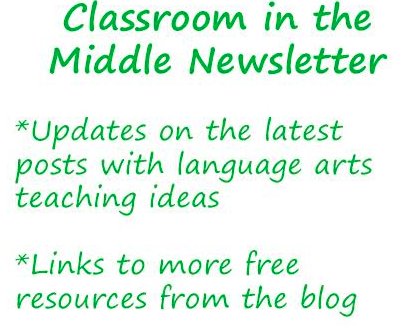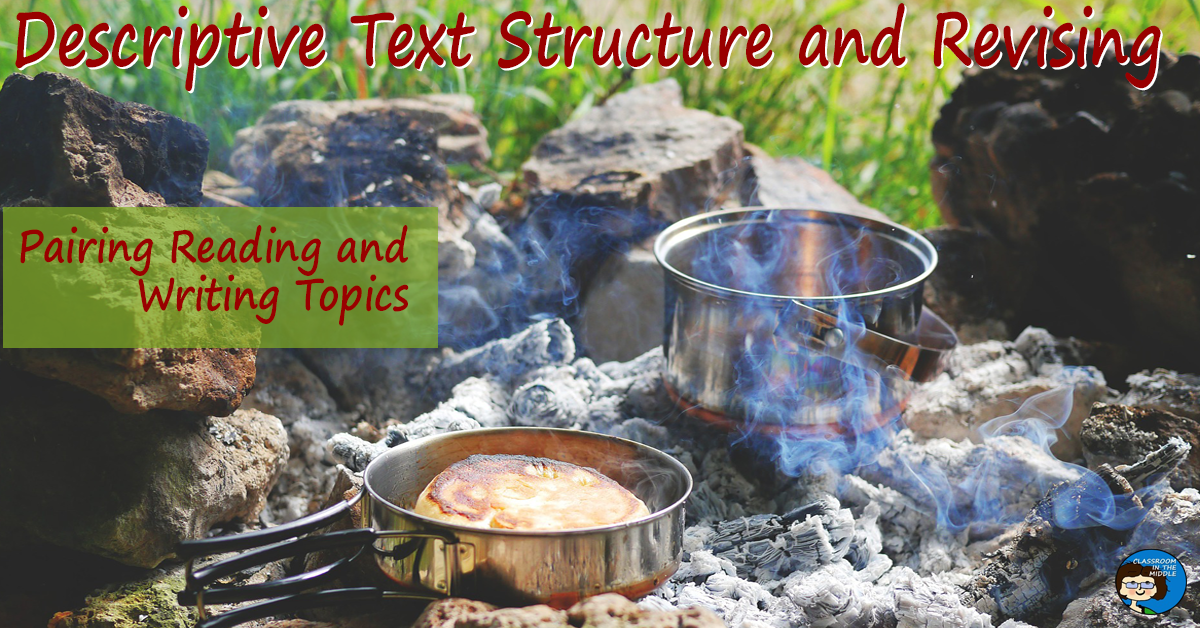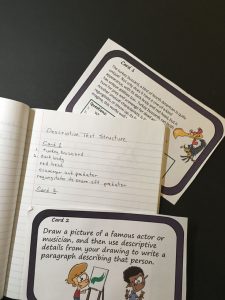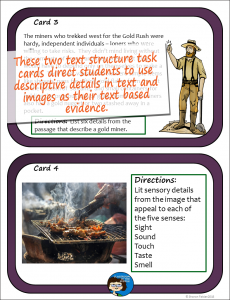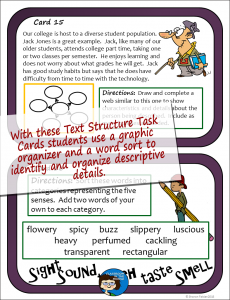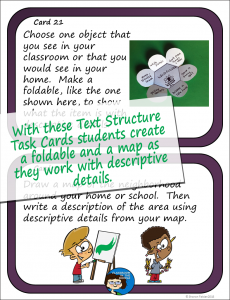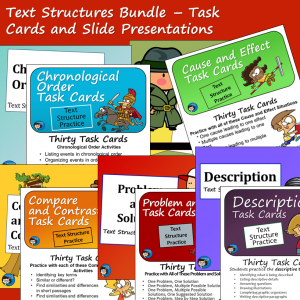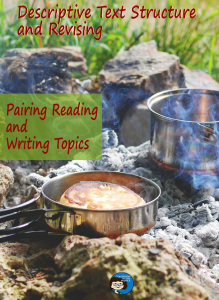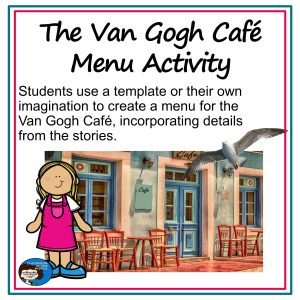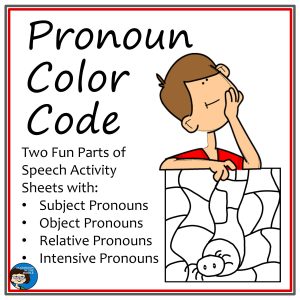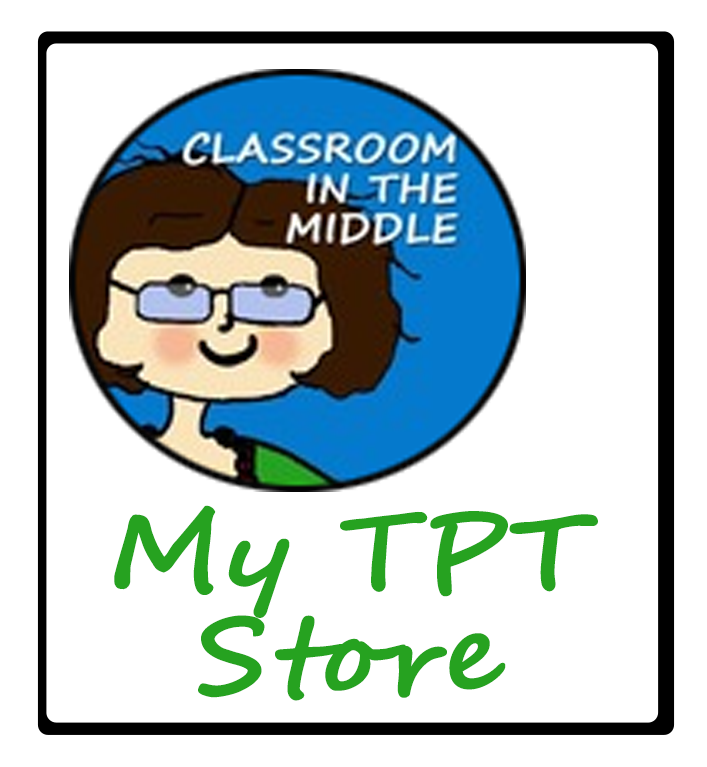The descriptive text structure seems to be the one that is often overlooked, and that is a shame because there are so many fun and interesting lessons that you can do with descriptive writing. Teaching students to take note of this text structure prepares them perfectly for working to add more description to their own writing as they revise – a great combination for a middle school or upper elementary language arts lesson if you ask me!
Just teaching this simple text structure can be a stumbling block – ironically because it seems SO simple. After all, what new can you offer middle graders about describing something? Well, let’s see . . .
GUESS THE OBJECT
A fun lesson is identifying objects (or people, or places, or animals) from their description. Kind of like a game of 20 questions without the questions. Kids read the description and look for clues.
TEXT BASED (DESCRIPTIVE) EVIDENCE
Another lesson idea is to have kids use written descriptions as their text based evidence as they practice or review how to answer TBQs.
DRAW, GRAPH, OR CHART
Using just a written description, kids can draw what they “see,” or complete a graph or chart to organize the information.
Other possibilities include completing a graphic organizer, sorting words, or just answering questions using a descriptive passage as their source.
These are all familiar activities that kids will be able to get into easily on their own without much additional how-to instruction, but did you ever think of using them as (almost) ready made text structure lessons?
And to get back to the main point (finally!), once kids have refreshed their minds about using descriptive details that are already in a text, it’s a natural step to move into having them work on increasing their skills at using descriptive details in their own writing. And if you can’t stand the idea of assigning one more descriptive lesson (or even if your think your kids definitely need that practice!), it’s a good bet that they can still use plenty of practice on the revising step of the writing process with descriptive details in mind.
I especially like lessons on revising with a specific goal in mind. For example, maybe kids could revise a “What I Did Over the Summer” essay to include at least three descriptive details about a place that they mentioned and three about one of the people in their essay. Or maybe they could revise an essay about a science topic with the goal of adding descriptive details that fit at least three of the five categories: taste, touch, smell, sight, and sound. Kids could revise by adding specific parts of speech: descriptive adjectives, adverbs of place, prepositional phrases about sounds or sights, or whatever.
You could say that the descriptive text structure is actually a great one to teach – the concepts are easy, and lessons are almost ready made – sounds perfect for a set of back to school lessons, distance learning lessons for at home students, or end of the year lessons! Next, I’ll show you some images of my Descriptive Text Structure task cards which can make teaching this concept even easier!
In the above image, a descriptive text structure card instructs the student to draw a picture and then use their picture as a prompt for descriptive writing.
Here are a few more from the set:
Here’s the link to the set of all five text structures with task cards and a slide presentation for each one:

